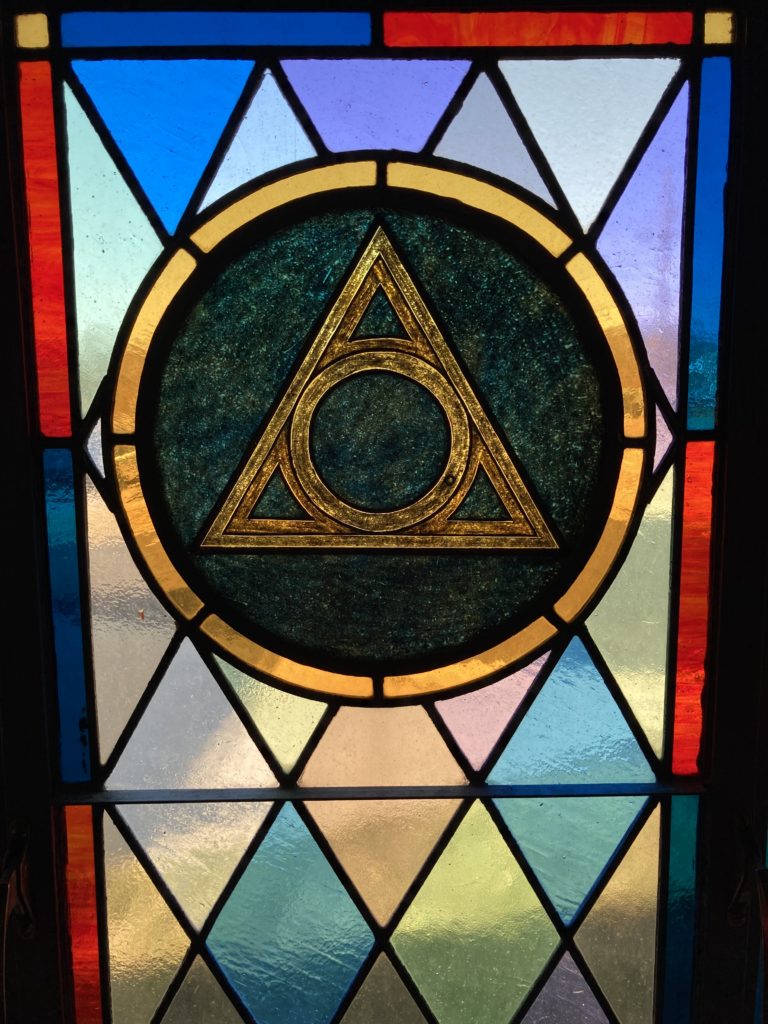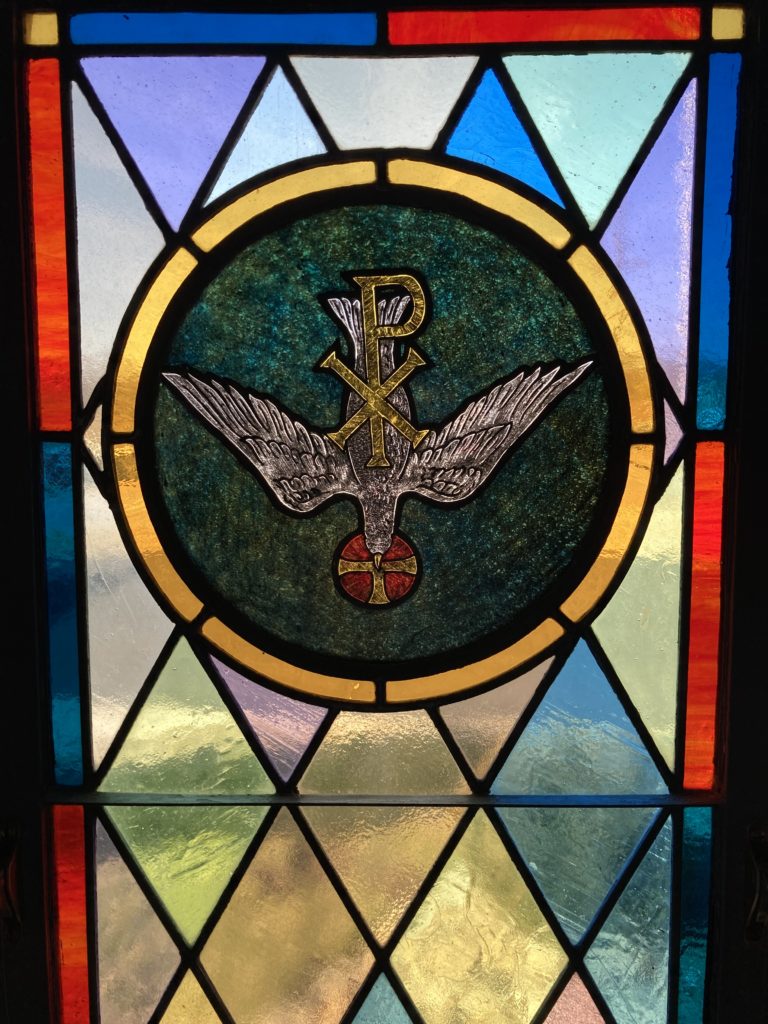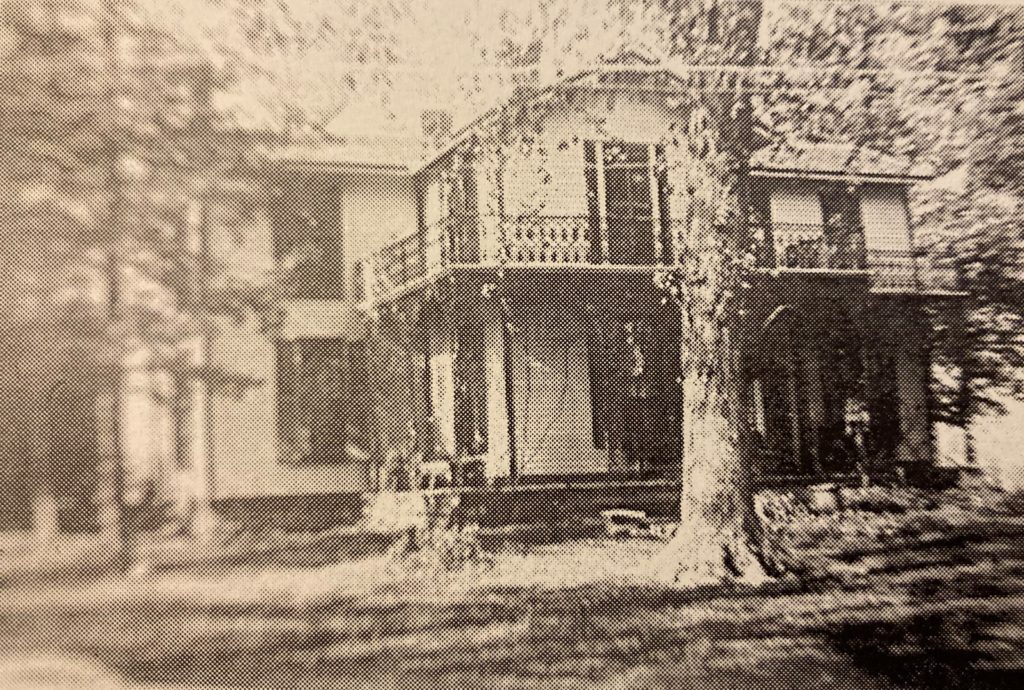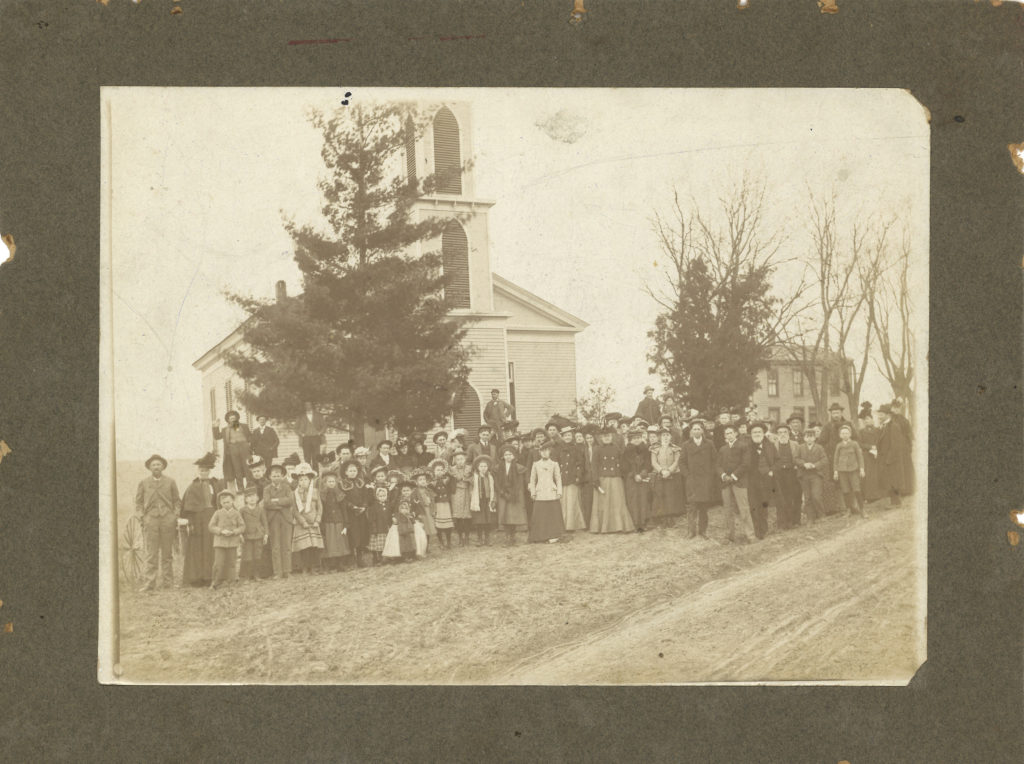Windows On Our World
February 2023 | Written by Maribeth Griessel
The January issue of The Porch contained the first segment of the new series, “Windows On Our World”, about both the history of Gashland Evangelical Presbyterian Church and of the stained glass windows gracing the walls of the sanctuary.
Last month the “Rose Window,” above the cross in the front of the sanctuary was featured. For February, we share with our readers the first two windows on the left/west side. The first pictures the “Descending Dove,” which illustrates the Holy Spirit descending upon Jesus as He was baptized in the Jordan River at the inception of His earthly ministry. The dove is overlayed with the Greek letters chi-rho, which is described as the monogram of Christ. The second of course shows an equilateral triangle with a circle inside, the triangle demonstrating the Triune God and the circle representing eternity.
All of the windows were selected by Dr. and Mrs. James W. Teener, Ruth (Mrs. Harold L.) Cliff and Jean (Mrs. O.A.) Richardson, after visiting the Methodist Church located at 5144 Oak Street in KCMO to view their windows and symbols. These windows will be shown and described, one or two each month, as Gashland’s history unfolds in The Porch.
Last month the question was posed, “Who was Joseph Gash?” As actress Julie Andrews so famously sang, “Let’s start at the very beginning.” So we will do exactly that.
In 1820, 23 year old Joseph Gash moved from Asheville, NC to Clay County in Missouri, purchasing 160 acres of land along Barry Road (formerly known as Liberty-Barry Rd), the site of what would, well over 150 years later, become the Metro North Shopping Center. He then returned to NC to transport his herd of cattle to their new home. As the years passed, Joseph and his wife Elizabeth were parents to six children, including daughter Pauline, who married merchant Dan Carpenter in 1853 and inherited a portion of her father’s property. The Carpenters raised fruit on their 160 acre farm, and the spacious Carpenter home was built near the current site of Commerce Bank on Barry Road. Pauline’s brother, Lee, also farmed in the area. He and his wife were faithful, charitable members of the Barry Cumberland Presbyterian Church. The Cumberland Presbyterian denomination was formed in the early 1800s in Kentucky, following a split with the mainstream Presbyterian Church. After growing to nearly 200,000 members in 3,000 churches, a large portion of the Cumberland group eventually opted to merge with the Presbyterian Church U.S.A. So this offers clues to both the origin of the name “Gashland”, an area named for Joseph Gash and his family, and then the family’s connection through the old Barry Cumberland Presbyterian Church to what would become our church several generations later.
Prior to the establishment of Barry as an Indian trading post around 1829, when Clay County formed the western and northern boundaries of Missouri, the Lewis and Clark Expedition quite probably had crossed through this area in 1804. Missouri attained statehood on August 10, 1821. The old town of Barry, named for W. T. Barry, Postmaster General during the administration of President John Quincy Adams, served as a stopover location for travelers coming from Independence, MO, and points farther to the east, as they traversed the Oregon Trail. A two room log house, one of the earliest buildings, was erected straddling the line of Clay and Platte Counties, with part of the building in Missouri and part in the Indian territory. This log trading post was purchased in 1839 by Judge Thomas Chevis and used as an inn and tavern. Horses carrying mail from St. Louis to Fort Leavenworth were stabled there. The inn later became the home of Mr. and Mrs. Robert (Mamie Chevis) Samuel. This home has since been preserved as an historic building, now called the Chevis/Samuel Home, and was donated by Robert and Mamie’s sons, J.K. and M.T., then moved to Missouri Town at Lake Jacomo.
June 3, 1826, saw the genesis of Barry Cumberland Presbyterian Church, first part of the old McGee Presbytery, which had been organized in 1820, then of the Lexington Presbytery, before becoming a member of the Platte Presbytery of the Cumberland Church in 1845, and then of the Presbytery of Kansas City. Early Cumberland Presbyterian mission settlers from Tennessee and Kentucky, led by the Reverend Robert D. Morrow, organized the first congregation when 27 people began worship at Weeden’s Campground, on the southwest corner of what is now Vivion Road and North Brighton. Twenty years later the congregation moved to a shared building at Second Creek – Linkville in Platte County. 1859 brought the construction of a new church building on Old Stagecoach Road, built at a cost of $1,885, free of debt! This house of worship, as pictured here, included a belfry which would house one of two church bells, forged of solid bronze by the Buckeye Bell Foundry in Cincinnati, OH, and shipped via river, railroad and horse-drawn wagons in 1883, one for Barry Presbyterian and the other for Barry Christian. The Barry Presbyterian bell tolled every Sunday for nearly a century, and at funerals could be heard tolling out the age of the deceased.
Among early pastors were: O.D. Allen, A.B. Miller; W. Schenk, W.O.A. Perry, J.H. Norman, Rev. Loos and Rev. Thomas Alton.
Barry Presbyterian was one of three churches founded in northwest Missouri in the early 1800’s, with the other two of Primitive Baptist descent. The frontier town of Barry, a mile west of Gashland, boasted four doctors, two blacksmith shops and four general stores. The church included a base burner stove and a Storey-Clark organ, transported from Chicago, IL.
As there is so much rich history to include tying the old Barry Cumberland Presbyterian Church and the Gashland area, we will further delve into the mid and late 1800’s next month. Do you know you can go visit the 3 acre Barry Cemetery, founded in 1840, containing graves of pioneers, Indians and slaves? Or the Gash-Carpenter Cemetery containing the graves of Pauline (Gash) and Dan Carpenter? What have you heard about the Gashland Railroad Station? In March we will take you on a tour of several historic locations, as well as offering more information about the fascinating Mamie Samuel. Rumor has it we may have a picture of her personal Bible to share with you..



Home of Pauline (Gash) and Dan Carpenter, built in the second half of the 19th century.

Barry Cumberland Presbyterian Church
